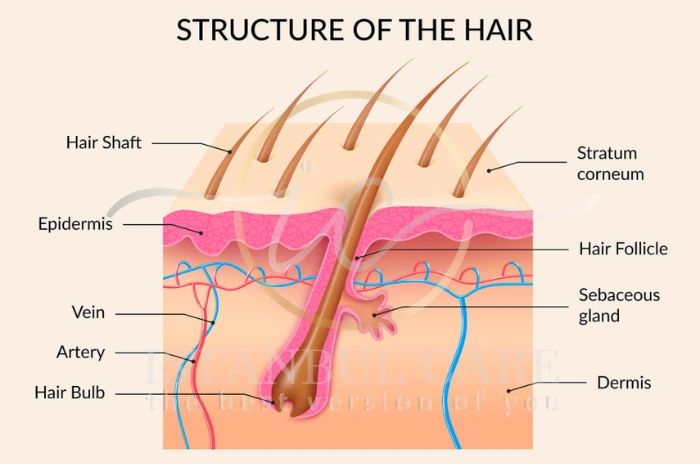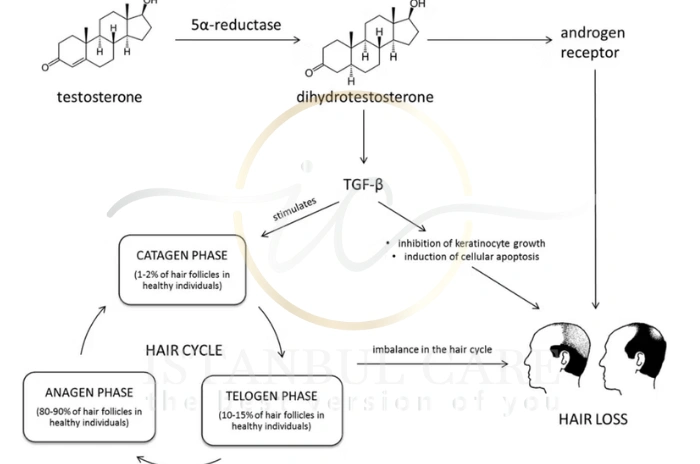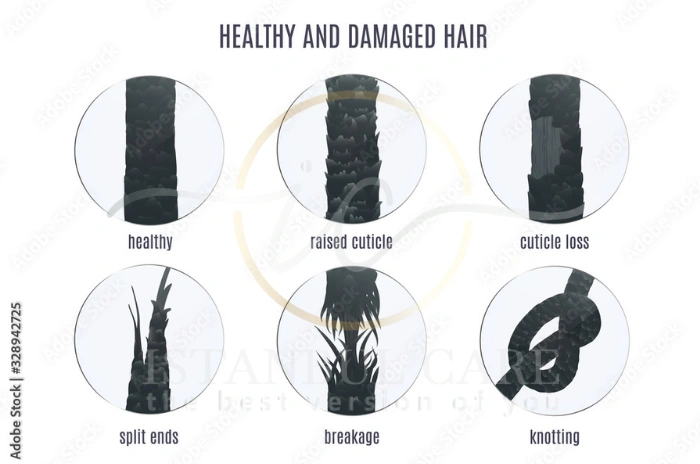The hair shaft represents one of the most fascinating and complex structures in human biology, serving as both a protective element and a defining characteristic of our appearance. Understanding hair shaft anatomy is crucial for anyone interested in hair health, cosmetic science, or medical dermatology. The intricate structure of hair consists of multiple components working together to create the strong, flexible fibers we see emerging from our scalp.
Each strand of hair that extends beyond the skin surface is primarily composed of the hair shaft, which contains three distinct layers of the hair shaft: the protective outer cuticle of hair, the structural cortex of hair, and the inner medulla of hair. This sophisticated architecture enables hair to withstand daily stresses while maintaining its essential functions of protection and thermoregulation.

What Is the Hair Shaft?
The Three Layers of the Hair Shaft: Cuticle, Cortex, and Medulla
The hair shaft structure consists of three primary layers, each with unique properties and functions. The cuticle cortex medulla arrangement creates a hierarchical system that provides both protection and structural integrity. The outermost hair cuticle acts as a protective barrier, while the hair cortex provides the main structural support, and the hair medulla forms the innermost core.
This layered architecture is similar to a tree trunk, where each layer serves a specific purpose in maintaining the overall strength and functionality of the structure. The layers of hair shaft work synergistically to create the remarkable properties we observe in human hair, including its ability to stretch, resist breakage, and maintain its shape.
Definition and Function of the Hair Shaft
The hair shaft is defined as the visible portion of hair that extends above the skin surface, distinct from the hair root which remains embedded within the hair follicle. This portion of hair is essentially non-living tissue composed primarily of keratinized cells that have lost their nuclei and organelles during the formation process.
The primary functions of the hair shaft include protection from UV radiation, insulation against temperature extremes, and sensory perception through its connection to nerve endings at the follicle level. Additionally, the hair shaft function extends to social and psychological aspects, contributing significantly to personal identity and self-expression.
Role of Keratin in the Hair Shaft Structure
Keratin in hair forms the fundamental building blocks of the entire hair shaft anatomy. This fibrous protein accounts for approximately 95% of the hair’s dry weight and provides the structural framework that gives hair its strength and flexibility. The hair protein structure consists of alpha-keratin chains arranged in a complex helical configuration.
The keratinization process begins in the hair bulb and continues as cells move upward through the follicle. During this process, cells gradually lose their moisture content and become filled with keratin fibers, creating the durable, water-resistant structure we recognize as the hair shaft.
Understanding Hair Shaft Anatomy
The Three Main Layers of the Hair Shaft
The layers of the hair shaft represent a sophisticated biological engineering system. Each layer contributes unique properties that collectively create the remarkable characteristics of human hair. Understanding these types of hair shafts and their structural components is essential for comprehending how hair functions and responds to various treatments.
| Layer | Location | Composition | Primary Function | Thickness |
|---|---|---|---|---|
| Cuticle | Outermost | Overlapping scale cells | Protection & shine | 5-10% of diameter |
| Cortex | Middle | Keratin fibrils & melanin | Strength & color | 75-90% of diameter |
| Medulla | Innermost | Loose cells with air spaces | Thermal properties | 15-20% of diameter |
The three-layer system evolved to provide optimal protection while maintaining flexibility and strength. This arrangement allows hair to withstand mechanical stress, chemical exposure, and environmental factors while preserving its essential functions.
Medulla – The Innermost Layer
The medulla of hair represents the innermost layer of the hair shaft structure, though it may be absent in fine or blonde hair types. When present, the medulla consists of loosely packed cells with air spaces between them, creating a honeycomb-like structure that can be observed under microscopic examination.
The medulla’s primary function remains somewhat unclear, but researchers believe it may contribute to the hair’s thermal properties and overall structural integrity. In hair shaft microscopy studies, the medulla appears as a central canal or series of air-filled spaces running along the hair’s length.
The presence and characteristics of the medulla can vary significantly between individuals and even between different hairs on the same person. This variation makes the medulla particularly useful in hair shaft and forensics applications, where it serves as one of several identifying characteristics.
Cortex – The Structural Core
The cortex of hair forms the main body of the hair shaft and accounts for approximately 75-90% of the hair’s total volume. This layer contains the majority of the hair’s keratin content and determines most of the hair’s mechanical properties, including strength, elasticity, and color.
Within the cortex, keratin fibers are arranged in a complex pattern of macrofibrils and microfibrils, creating a structure that can stretch up to 30% of its original length when wet. The cortex also contains melanin pigments that give hair its natural color, making this layer crucial for both structural and aesthetic properties.
The cortical cells are elongated and aligned parallel to the hair shaft’s length, creating the fiber-like structure that gives hair its characteristic strength and flexibility. This arrangement allows the hair shaft to bend without breaking and return to its original shape after deformation.
Cuticle – The Protective Outer Layer
The cuticle of hair consists of overlapping scale-like cells that form the outermost layer of the hair shaft structure. These cells, arranged like roof shingles, create a protective barrier that shields the inner layers from environmental damage and chemical assault.
The cuticle’s health directly impacts the hair’s appearance, as damaged cuticle cells can cause hair to appear dull, tangled, or frizzy. When the cuticle is intact and smooth, it reflects light evenly, creating the glossy appearance associated with healthy hair.
The cuticle consists of multiple sub-layers, including the epicuticle, exocuticle, and endocuticle, each with specific chemical compositions and functions. Understanding cuticle structure is essential for developing effective hair shaft care products and treatments.

Hair Shaft vs Hair Follicle
Key Differences Between Shaft and Follicle
The distinction between hair shaft vs. hair root is fundamental to understanding hair biology. While the hair shaft represents the visible, keratinized portion above the skin surface, the hair follicle is the living structure beneath the skin that produces and supports the hair.
| Characteristic | Hair Shaft | Hair Follicle |
|---|---|---|
| Location | Above skin surface | Below skin surface |
| Cell Status | Dead, keratinized cells | Living, metabolically active |
| Blood Supply | None | Rich vascular network |
| Nerve Supply | None | Sensory nerve endings |
| Growth Ability | Cannot regenerate | Continuously produces hair |
| Repair Capacity | No self-repair | Can heal and regenerate |
| Nutrient Dependence | None | Requires nutrients from blood |
The hair follicle contains living cells, blood vessels, and nerve endings, making it the metabolically active component of the hair system. In contrast, the hair shaft consists of dead, keratinized cells arranged in the three-layer structure previously described.
This relationship is crucial for understanding hair growth, as all nutrients and growth factors must be supplied through the follicle system. The hair shaft itself cannot repair damage or regenerate, making prevention of damage particularly important for maintaining hair health.
How They Work Together for Hair Growth
The hair follicle and hair shaft work as an integrated system to produce and maintain hair growth. The follicle’s matrix cells divide rapidly, producing new cells that gradually keratinize and form the hair shaft structure as they move upward through the follicle.
This process, known as keratinization, transforms living cells into the durable, protective structure of the hair shaft. The coordination between follicle activity and shaft formation determines the overall quality, thickness, and growth rate of individual hairs.
Hair Shaft Structure and Growth
Cellular Composition and Keratinization
The cellular composition of the hair shaft results from a highly organized process of differentiation and keratinization that begins in the hair bulb function area of the follicle. As cells divide in the matrix region, they begin accumulating keratin proteins while gradually losing their organelles and nuclei.
This transformation creates the non-living but highly structured hair shaft anatomy that we observe. The process involves complex biochemical changes that affect the final properties of the hair, including its strength, flexibility, and resistance to environmental factors.
The hair protein structure that emerges from this process consists primarily of alpha-keratin arranged in specific patterns that give hair its unique mechanical properties. Understanding this composition is crucial for developing treatments that can strengthen or repair damaged hair.
The Role of Matrix Cells in Shaft Formation
Matrix cells located in the hair bulb serve as the primary source of all hair shaft components. These rapidly dividing cells differentiate into the various cell types that will form the cuticle, cortex, and medulla layers of the mature hair shaft structure.
The activity and health of matrix cells directly influence the quality of the resulting hair shaft. Factors that affect matrix cell function, such as nutrition, hormones, and genetics, can significantly impact the structure of hair and its overall appearance and performance.
Types and Characteristics of Hair Shafts
Terminal Hair vs Vellus Hair
Types of hair shafts can be broadly categorized into terminal and vellus hair, each with distinct characteristics and functions. Terminal hair represents the thick, pigmented strands found on the scalp, while vellus hair consists of fine, short, and typically unpigmented fibers found on most body surfaces.
| Feature | Terminal Hair | Vellus Hair |
|---|---|---|
| Diameter | 60-100 micrometers | Less than 30 micrometers |
| Length | Can grow several feet | Usually under 2 cm |
| Pigmentation | Heavily pigmented | Little to no pigment |
| Medulla | Usually present | Often absent |
| Cortex | Well-developed | Thin or minimal |
| Growth Duration | 2-7 years | Few months |
| Locations | Scalp, beard, body hair | Face, arms, legs (fine hair) |
The hair shaft anatomy differs significantly between these types, with terminal hair displaying all three layers (cuticle, cortex, and medulla) while vellus hair may lack a medulla entirely. These differences reflect the varying functional requirements and growth patterns of different hair types.
Variation Based on Shape and Diameter
The shape and diameter of the hair shaft vary considerably among individuals and ethnicities, creating different hair types with unique properties. Straight hair typically has a circular cross-section, while curly hair may have an elliptical or flattened cross-section that contributes to its curved growth pattern.
These variations in hair shaft structure affect how hair behaves during styling, how it reflects light, and how it responds to various treatments. Understanding these differences is crucial for developing appropriate care routines and products for different hair types.
The Hair Growth Cycle and the Hair Shaft’s Role
Anagen Phase: Active Hair Shaft Formation
During the anagen phase of the hair growth cycle, the follicle actively produces the hair shaft through continuous cell division and keratinization. This phase can last several years and determines the maximum length that hair can achieve.
| Hair Growth Phase | Duration | Hair Shaft Activity | Follicle Status |
|---|---|---|---|
| Anagen (Growth) | 2-7 years | Active formation & elongation | Fully active, producing cells |
| Catagen (Transition) | 2-3 weeks | Production stops | Shrinking, disconnecting |
| Telogen (Rest) | 2-4 months | Shaft remains attached | Dormant, preparing to shed |
| Exogen (Shedding) | Variable | Shaft detaches and falls | Beginning new cycle |
The quality of hair shaft formation during anagen directly impacts the overall health and appearance of the hair. Factors that disrupt this phase can lead to weakened hair structure or premature entry into the next phase of the cycle.
Catagen and Telogen: When the Hair Shaft Sheds
The catagen and telogen phases represent periods when hair shaft production ceases and the existing shaft prepares for shedding. During catagen, the follicle shrinks and disconnects from the hair shaft, while telogen represents a resting phase before the cycle begins anew.
Understanding these phases is crucial for recognizing normal hair shedding patterns versus pathological conditions like telogen effluvium, where excessive numbers of hairs enter the telogen phase simultaneously.

Common Hair Shaft Problems and How to Prevent Them
Causes of Hair Shaft Damage: Heat, Chemicals, and Breakage
Hair shaft disorders can result from various external and internal factors that compromise the integrity of the hair structure. Heat styling, chemical treatments, and mechanical stress represent the most common causes of hair shaft damage, affecting primarily the cuticle layer initially.
Hair breakage prevention requires understanding how these factors affect the hair shaft structure and implementing protective measures. Regular use of heat protectants, gentle handling techniques, and appropriate chemical processing can significantly reduce damage risk.
Chemical damage often begins with cuticle disruption, which then allows harmful substances to penetrate the cortex and cause more severe structural damage. Recognizing early signs of damage allows for intervention before irreversible harm occurs.
Genetic and Medical Conditions Affecting the Hair Shaft
Several genetic conditions can affect hair shaft anatomy, leading to structural abnormalities that impact hair strength and appearance. These conditions may involve defects in keratin production, follicle development, or the keratinization process itself.
Medical conditions affecting nutrition, hormone levels, or immune function can also impact hair shaft quality and growth. Understanding these relationships helps identify when hair problems may indicate underlying health issues requiring medical attention.
Chemical and Physical Properties of the Hair Shaft
Keratin and Protein Composition
The hair protein structure consists primarily of alpha-keratin organized into complex hierarchical arrangements. These proteins provide the fundamental mechanical properties that make hair strong yet flexible, allowing it to withstand daily stresses while maintaining its shape.
The specific amino acid composition of hair keratin includes high levels of cysteine, which forms disulfide bonds that contribute significantly to hair’s strength and stability. Understanding this composition helps explain how various treatments affect hair properties.
Moisture Content and Lipids
The hair shaft typically contains 10-15% moisture under normal conditions, though this can vary based on environmental factors and hair condition. The cuticle layer contains lipids that help regulate moisture content and provide protection against environmental factors.
Maintaining appropriate moisture levels is crucial for hair health, as both excessive dryness and over-hydration can compromise the hair shaft structure and lead to breakage or other damage.
Strength and Flexibility
The mechanical properties of the hair shaft result from its unique protein structure and layered architecture. Individual hairs can support weights many times their own mass while maintaining the flexibility needed for normal movement and styling.
These properties depend on the integrity of all three layers of the hair shaft, with damage to any layer potentially compromising overall performance. The biomechanics of hair continue to inspire materials science research seeking to replicate these remarkable properties.
Mechanical Behavior of Hair Shafts
Response to Tension and Stress
Hair biomechanics involves complex responses to various types of mechanical stress. When subjected to tension, the hair shaft exhibits elastic behavior up to a certain point, after which permanent deformation or breakage occurs.
The stress-strain relationship of hair varies with moisture content, temperature, and the rate of force application. Understanding these relationships is crucial for developing styling techniques and tools that minimize damage while achieving desired results.
Factors That Affect Hair Shaft Strength
Multiple factors influence the strength and durability of the hair shaft structure. Environmental conditions, chemical treatments, age, and genetic factors all play roles in determining how well hair can withstand mechanical stress.
The condition of the cuticle layer particularly affects overall hair shaft strength, as damage to this protective layer can lead to rapid deterioration of the underlying cortex. Maintaining cuticle integrity through appropriate care is essential for preserving hair strength.
Damage and Changes in the Hair Shaft
Causes of Hair Shaft Deformation
Hair shaft deformation can result from various factors including mechanical stress, thermal damage, and chemical exposure. Each type of damage affects the hair shaft structure differently, potentially altering its mechanical properties and appearance.
Permanent deformation often involves disruption of the disulfide bonds within the keratin structure, leading to changes in hair’s natural curl pattern or overall integrity. Understanding these mechanisms helps in developing protective strategies and treatments.
Effects of Heat, Chemicals, and UV Exposure
Heat exposure can cause significant changes to the hair shaft anatomy, particularly affecting the protein structure and moisture content. Excessive heat can lead to protein denaturation and permanent damage that cannot be reversed through conditioning treatments.
Chemical exposure from coloring, perming, or relaxing treatments can alter the hair shaft structure at the molecular level. UV radiation can also degrade hair proteins over time, leading to color fading and structural weakening.
Engineering and Scientific Applications
Why Hair Shaft Properties Matter in Forensic Science
Hair shaft and forensics applications rely on the unique characteristics of individual hairs for identification purposes. The hair shaft anatomy provides multiple points of comparison, including diameter measurements, cuticle patterns, and medulla characteristics.
Hair shaft analysis in forensic contexts involves detailed microscopic examination of structural features that can help link evidence to specific individuals or populations. The durability of the hair shaft makes it valuable evidence that can persist long after other biological materials have degraded.
Hair Shaft Analysis in Material Science Research
The remarkable properties of the hair shaft structure have inspired extensive research in materials science and bioengineering. Scientists study hair biomechanics to understand how natural systems achieve optimal combinations of strength, flexibility, and durability.
This research has led to developments in synthetic fibers, protective coatings, and composite materials that attempt to replicate the hierarchical structure and properties of natural hair. Understanding hair shaft anatomy continues to drive innovation in various technological applications.
The Biomechanics of Hair Shaft Performance
The biomechanics of hair involve complex interactions between the three layers of the hair shaft and their response to various environmental and mechanical factors. This field of study examines how hair’s natural structure optimizes performance under different conditions.
Research in hair biomechanics has revealed sophisticated mechanisms that allow hair to maintain its properties across a wide range of conditions while providing effective protection and insulation. These insights continue to inform both hair care product development and biomimetic material design.
Hair Transplant Procedures and the Hair Shaft
Why Understanding the Shaft Matters for Transplants
Hair transplant procedures require thorough understanding of hair shaft anatomy to achieve natural-looking results. The orientation, angle, and distribution of transplanted hairs must consider the natural growth patterns and hair shaft characteristics of the recipient area.
Successful transplantation depends on preserving the integrity of both the follicle and the attached hair shaft during the extraction and implantation process. Understanding hair shaft structure helps surgeons minimize trauma and maximize graft survival rates.
How Transplants Affect Hair Shaft Quality and Growth
Following hair transplant procedures, the quality and characteristics of the new hair shaft growth may differ from the original hair due to various factors including surgical trauma, healing processes, and changes in blood supply to the transplanted follicles.
Monitoring hair shaft quality after transplantation helps assess the success of the procedure and identify any issues that may require additional treatment. Understanding normal healing processes and expected changes in hair shaft anatomy helps both patients and practitioners evaluate outcomes appropriately.
Speak with our expert Hair Transplantation specialists

Speak with our expert Hair Transplantation specialists
We’re ready to answer your questions
FAQs for Understanding Hair Shaft Anatomy and Its Three Layers
The hair shaft is the visible portion of hair that extends above the skin surface, composed of three layers of keratinized cells that provide structure and protection.
The three layers of the hair shaft are the cuticle (outer protective layer), cortex (structural core), and medulla (innermost layer).
The hair shaft is the non-living, visible portion of hair above the skin, while the hair follicle is the living structure beneath the skin that produces and supports hair growth.
Hair shaft damage is generally not reversible since the shaft consists of non-living tissue, making prevention and protective care essential for maintaining hair health.
The hair growth cycle determines when new hair shafts are formed during the anagen phase and when existing shafts are shed during the telogen phase.
Preventing hair shaft problems involves using heat protection, gentle handling techniques, regular conditioning, and avoiding excessive chemical processing or mechanical stress.
Keratin in hair provides the primary structural framework, accounting for 95% of the hair’s dry weight and giving hair its strength, flexibility, and protective properties.
Hair damage typically begins with cuticle disruption and can progress to affect the cortex, leading to breakage, dullness, and loss of structural integrity in the hair shaft structure.

